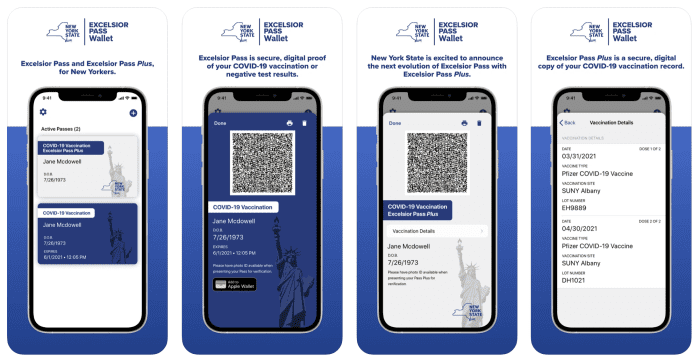This post was originally published on this site
New York City will require proof of COVID-19 vaccinations for indoor activities beginning Aug. 16, which means locals and visitors are going to need to start carrying proof of vaccination.
Mayor Bill de Blasio announced the new requirement Tuesday, making New York the first big city in the U.S. to impose such restrictions. Full enforcement is set to begin on Sept. 13 and will apply to indoor dining, gyms and indoor entertainment venues.
The simplest way to prove you’re vaccinated would be to present your CDC-issued vaccine card, but if you’re worried about losing or damaging it, the city’s Excelsior Pass is the next best thing.
See: Don’t laminate your COVID vaccination card before doing these 5 things
And: Do you need your vaccine card to travel in the U.S.? It depends.
In order to use the app, you need to have been vaccinated in New York because it uses city and state records to confirm your vaccination status. If you were vaccinated in another state, download the NYC COVID Safe app to store pictures of your photo ID, vaccine card and COVID test results.
But if you were vaccinated in New York, here’s a step-by-step guide for how to use the Excelsior Pass.
What is the Excelsior Pass?
The Excelsior Pass is a digital platform developed through a partnership with IBM IBM, -0.89% that enables individuals to store digital proof of test results and/or vaccine status, and businesses and venues to verify these items without accessing personal-health data.
The vaccine passport uses personalized QR codes that verify a person’s vaccination status, and venues like Madison Square Garden, Barclays Center, Yankee Stadium and Citi Field have already been using the platform.
The system utilizes blockchain technology and encryption as safeguards against sensitive information falling into the wrong hands, but a governor’s office spokesman also noted that sensitive medical information is not stored on the app itself.
Am I eligible for a New York State Excelsior Pass?
You can generate a pass if you haven’t tested positive for COVID-19 in the past 10 days. Beyond that, you’ll need to meet one of three requirements. If you’ve been fully vaccinated in the State of New York and it has been at least 15 days since your final shot, you received a negative result from a PCR test in New York in the last three days, or you received a negative result from an antigen test in New York in the last six hours.
If you meet these requirements, get your vaccination or testing records handy and start setting up your pass.
Setting up the pass
- Download the NYS Wallet app for iPhone or Android
- Open the app and enter your information — name, date of birth, zip code and phone number
-
Enter your vaccination information — the platform will ask for the date of your final dose (or if you received the Johnson & Johnson vaccine, just submit the date of your single dose), the county in which you received your vaccine, and the type of vaccine you received (Pfizer
PFE,
-1.09% ,
Johnson & Johnson
JNJ,
-0.56%
or Moderna
MRNA,
+8.42%
) - The system will then verify your information and generate your pass.

New York State Office of Information Technology Services
I don’t have a smartphone, how can I prove my vaccination status?
If you don’t have a smartphone, you can either present your physical vaccination card or use New York State’s website to generate and print your Excelsior Pass.
Using the pass
When asked to present your vaccination proof at places like restaurants or gyms, open the app and click on your pass. A QR code will pop up that businesses and venues can scan to validate your vaccination status. You might be asked to show your photo ID to verify that the pass belongs to you. According to the State’s website, adults may hold passes for their children who are under 18.
It’s still unclear how New York City’s vaccination requirement will be enforced, and The New York Times reports that the city is likely to announce more ways to verify vaccination in the coming weeks.
“The bottom line will be someone will have to have proof,” de Blasio said Tuesday. “As long as that proof is accurate and real, wherever it comes from, that’s what they’ll need to show.”

